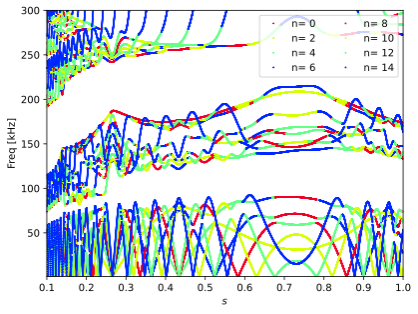The Stellarator Theory & Computation group in the Department of Applied Physics and Applied Mathematics at Columbia University is hiring a Postdoctoral Research Scientist. The work scope will include reduced model development, software development, and high-fidelity modeling of energetic particles in stellarator reactor concepts. See a more detailed project description below.
A Ph.D. in physics, applied mathematics, or a related discipline is required. Expertise in plasma physics, scientific computing, and HPC is desirable. The start date is flexible, but ideally, by early 2024. For more information, please contact Elizabeth Paul ([email protected]). Salary and rank will be commensurate with experience. Postdoctoral Research Scientists are eligible for Columbia housing benefits.
Recently, significant advances have been made in the development of stellarator configurations with excellent confinement of alpha particles by optimizing for quasisymmetry or using bounce-averaged cost functions. Once the neoclassical transport of energetic particles (EPs), including alpha particles, has been optimized, the EP transport by collective modes becomes a critical issue. EP pressure gradients can excite meso-to-macro scale EP instabilities such as Alfven eigenmodes (AEs) or energetic particle modes (EPM) and macroscopic MHD modes such as the helically-trapped energetic-ion-driven resistive interchange mode. These instabilities can induce large EP losses and degrade plasma heating efficiency. AEs and EPMs have been observed in many existing stellarator experiments, including HSX, CHS, LHD, W7-AS, TJ-II, W7-X, and Heliotron-J. We model fast ion dynamics with several levels of fidelity. At moderate fidelity, Monte Carlo guiding center calculations provide the evolution of the alpha particle distribution function in the absence of fluctuations (SIMSOPT). At higher fidelity, linear and nonlinear gyrokinetic or hybrid simulations are used to assess instabilities and turbulence driven by energetic particles (FAR3D, GX, GTC).
This project involves three main thrusts:
- High-fidelity modeling: Incorporation of energetic particle software (SIMSOPT, FAR3D, GX, GTC) into a framework for the validation of stellarator reactor scenarios.
- Guiding center software development: algorithmic and hardware acceleration of guiding center calculations in SIMSOPT.
- Energetic particle model development: development and benchmarking of reduced delta-? particle-based model for interaction between AEs and fast ions.
